Activating Art History in Chicago
By Claire Jackson
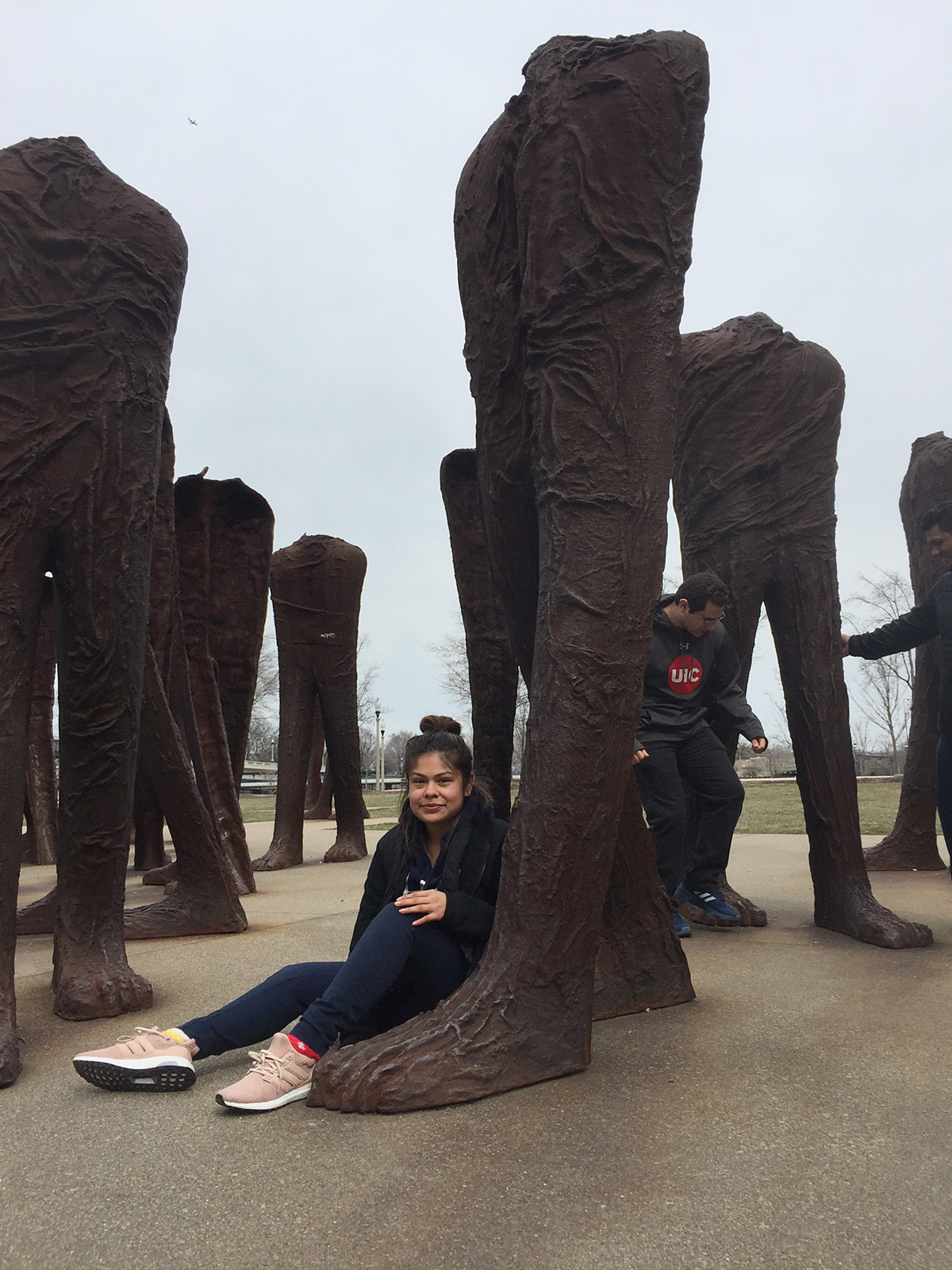
Twenty junior and senior high school students at CICS Northtown Academy activate AP Art History classroom knowledge by exploring Chicago in order to search for connections between the canon of 250 AP Art History artworks and local art objects throughout the city. Our goal was to fully experience Chicago, bringing art history to life by connecting historical and contemporary art objects through physical journeys to locations in Chicago. Students documented their shared experiences and reflected on their new-found power in actively exploring their city.

Goals
- Build a classroom culture where knowledge gaining, connecting, and sharing is celebrated.
- Experience art by exploring the city of Chicago.
- Connect classroom content to the ‘classroom’ of Chicago.
Guiding questions
- Why is the acquisition of knowledge valuable?
- How can you widen your sphere of experience in Chicago?
- Do you notice art throughout the city of Chicago?
- How do you take classroom knowledge with you into the city of Chicago?
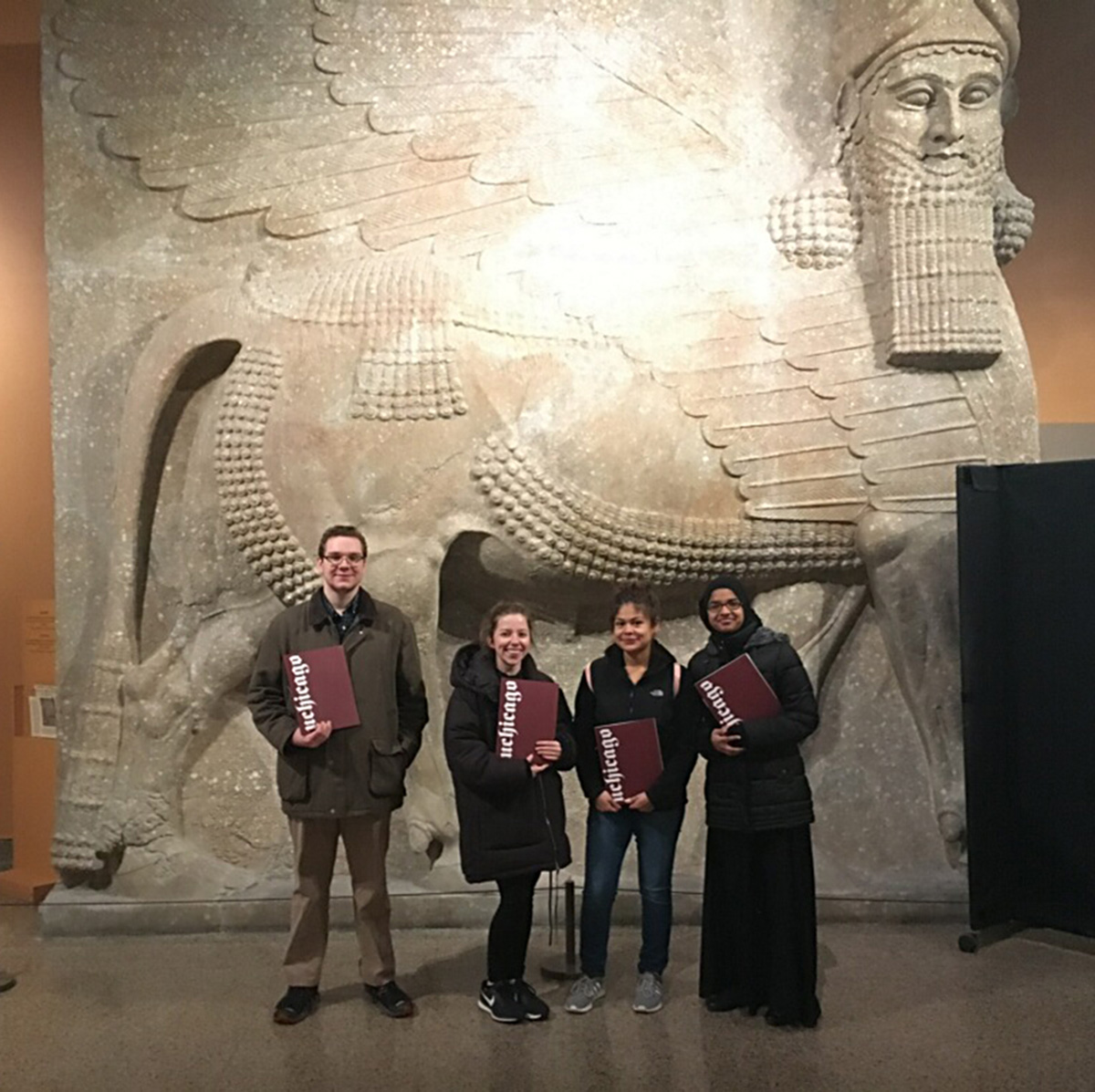
Documentation + Assessment Strategies
- The class created connection reports in Google Slides, creating a slideshow after each round of Chicago visits.
- Students took photos of themselves with their artistic connections throughout Chicago.
- After each round of exploration, students charted their connection locations on a map of Chicago.
- At first, our assessment of success was to visit unfamiliar locations in Chicago, but after the second round, the uniqueness and personal qualities of the connections to everyday life began to become more important.
Learning Activities
Timeframe
One semester of classroom time, four excursions into Chicago, and 150 artworks
SETTING THE STAGE
The curriculum of AP Art History includes a mammoth 250 artworks over 10 Content Areas ranging from Global Prehistory to Global Contemporary. The depth and breadth of content is daunting. As such, a classroom culture of rigorous but supportive learning is paramount to student success. Prior to the physical exploration of Chicago, our cohort of art historians engaged in several culture- and confidence-building experiences:
- Create a supportive cohort through collective weekly knowledge team competitions.
- Inspire individual knowledge acquisition through one-on-one artwork knowledge competitions.
- Students take ownership of artworks through teaching the content: first to a partner, next to a small group, and finally to a full class.
- Celebrate connection-building during class by pausing and clapping when students bring in knowledge of past works while learning new works.
Connection making is predicated on content acquisition. More meaningful and diverse connections come as more artworks have been learned. Each step below includes how many artworks have been learned in each step.
STEP 1
How does gaining knowledge change experience with art?
Students visit (independently) the MCA prior to learning the curriculum and then revisit (collectively) the MCA as a confidence builder of knowledge gained thus far. Students transform from individual, passive artwork watchers to collective, active artwork analyzers.
Artwork Acquisition: 20 artworks
Independent Visit
- Over the summer, students visit the MCA on their own.
- The only stated goal of the visit is to experience art.
- Students take a selfie with their favorite artwork.
Classroom Time
- During the first week of school, students share their MCA experience, focusing on specific artworks by the groups’ favorite artists from the experience (Amanda Williams and Takashi Murakami). After brainstorming, students work in groups to identify visual reasons why the artists’ works have value.
- Over the next two weeks, students learn the skill of analyzing art as they consider form, content, function, and context for every artwork.
Collective Visit
- As a learning cohort, the students return to the MCA to revisit the exhibits they have already experienced independently.
- Through an Artist-Guided tour, students learn that their framework for learning artworks can be applied to any artwork.
- Students have the confidence of having already ‘seen’ the artworks, but see the work with new, art historian eyes.
STEP 2
How can curriculum leave the classroom?
Students take their content knowledge into Chicago in search of real world connections, document the experience with photography and writing, and reflect cartographically back in the classroom with the cohort.
Artwork Acquisition: 70 artworks
Exploring Chicago
- Students explore Chicago in order to discover one connection between the objects in Chicago and artworks from the curriculum thus far.
- Students are encouraged to find connections anywhere; from sidewalks to museums to graffiti to architecture.
- Students document their findings through writing and photography.
Articulating the Connection
- In a collective slideshow, students capture their experience based on a teacher model. The collective slideshow allows students to browse each other’s explorations.
- Students include two images: the artwork from the curriculum and a photo of the Chicago connection. Both photos are identified with captions.
- Students write one paragraph to show their knowledge of the curriculum artwork and argue the quality of their Chicago connection.
Collaborative Cartography
- With their bodies, students map out the location of their Chicago connection. The classroom becomes the city. The locations are then noted on a map of Chicago via black colored push pins.
- Through discussion of rationale for where students explored (and their history with that place), students draw patterns in their experiences (most connections were drawn from habitual Chicago experiences in a narrow section of the city).
- Based on the patterns, students realize their experience in Chicago is highly limited geographically, and that their connections are largely based on their visits to well-known, comfortable locations.
- Students create goals for the second round of exploration in order to grow both the extent of their Chicago experience and the depth of their artwork connections.
STEP 3
How do you take ownership of content and Chicago?
Based on student reflection, the cohort returns to Chicago to expand their exploration radius and draw more meaningful and esoteric connections. Students follow previous steps, but with added nuance in each step.
Artwork Acquisition: 100 artworks
Exploring Chicago
- Returning to the city, students explore a widened geographical radius and push beyond museums and architecture as connection points.
- Nuance: Students visit a section of the city they have never been to before.
Articulating the Connection
- Students create a new collective slideshow using a student-generated format designed to articulate personal connections.
- Nuance: The image of the Chicago connection needs to be taken by the student, and the connection must NOT be able to be Googled.
Collaborative Cartography
- Diversity of location and new experiences in the city are shared and celebrated together.
- Nuance: To commemorate the increased exploration radius, students ceremonially add their new red push pins to the map of Chicago.
STEP 4
How do students continue the journey organically?
The project is never truly over. Now that several rounds of exploration of the city have taken place, organic exploration is shared and celebrated when it occurs.
Artwork Acquisition: 150 artworks
First to Connect
- Moving forward, class time is given for students to share connecting moments.
- When learning new content, students compete to connect to past learning first. When students have different connections, the more creative connection is celebrated.
Vacation Connections
- A student visits family in Guatemala and brings back stories and souvenirs of connections.
Teaching Friends and Family.
- While at museums with their friends, several students excitedly show off their knowledge as docents leading other students on a tour of the works they know.
Leadership in Other Classes
- In a field trip through another course, AP Art History students lead, teach, and coach the process of learning about artworks to groups of their classmates.
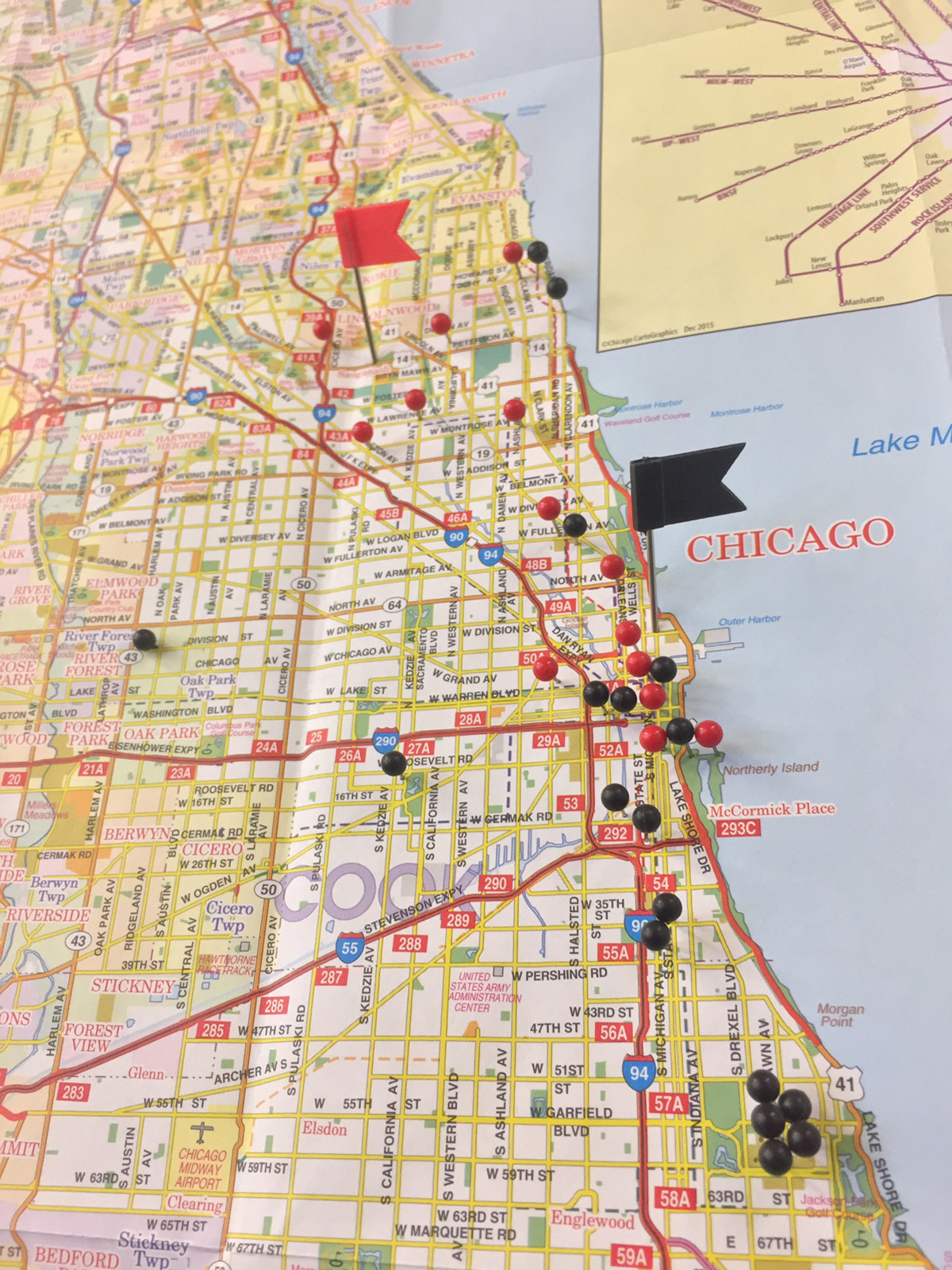
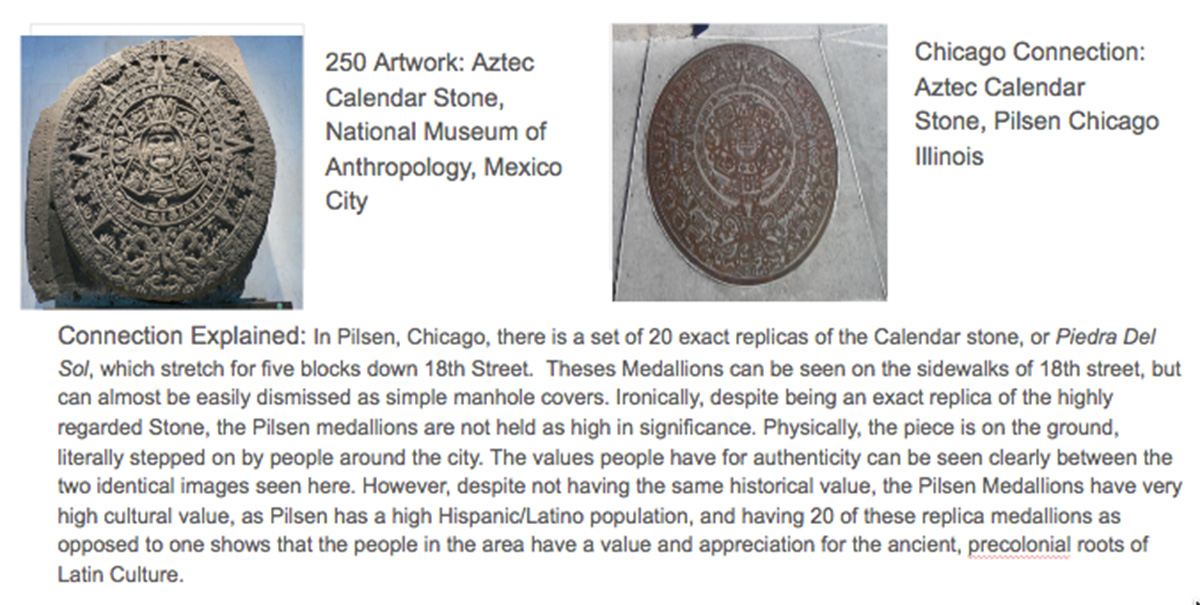
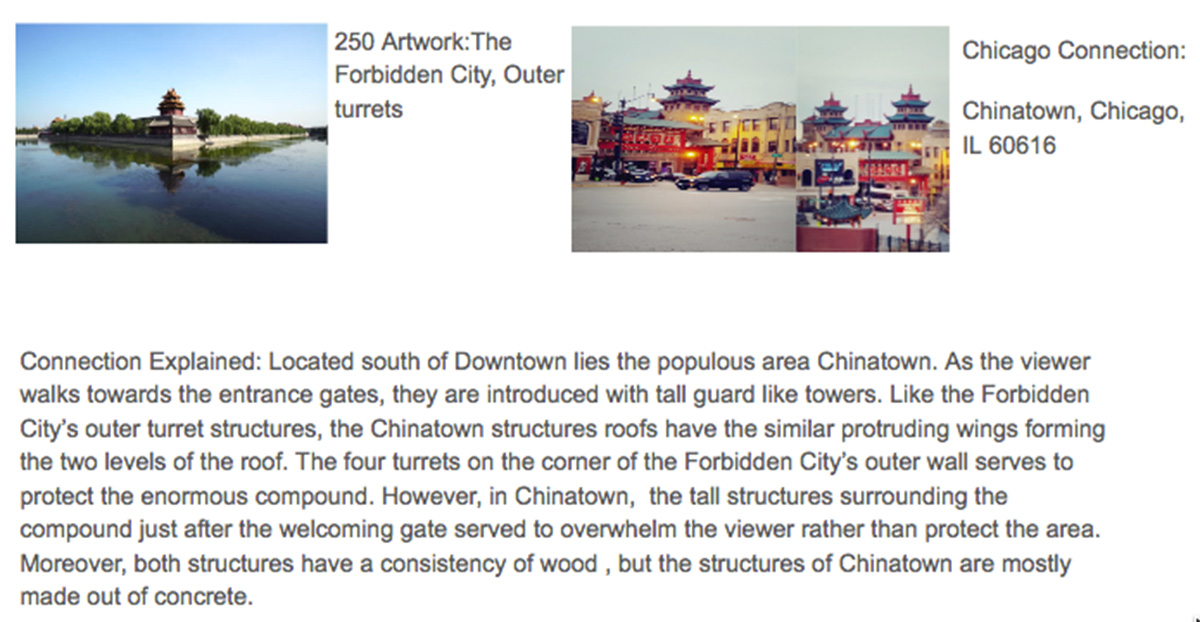
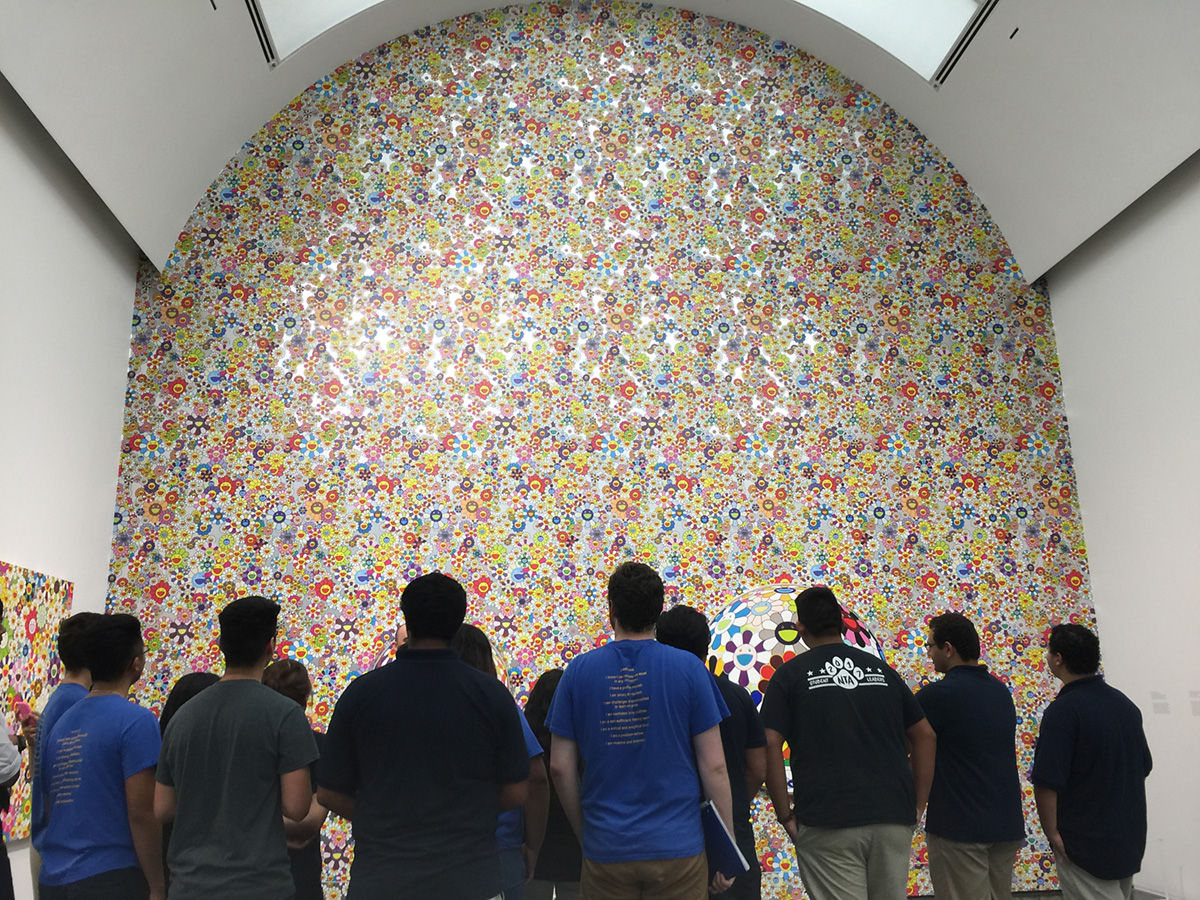
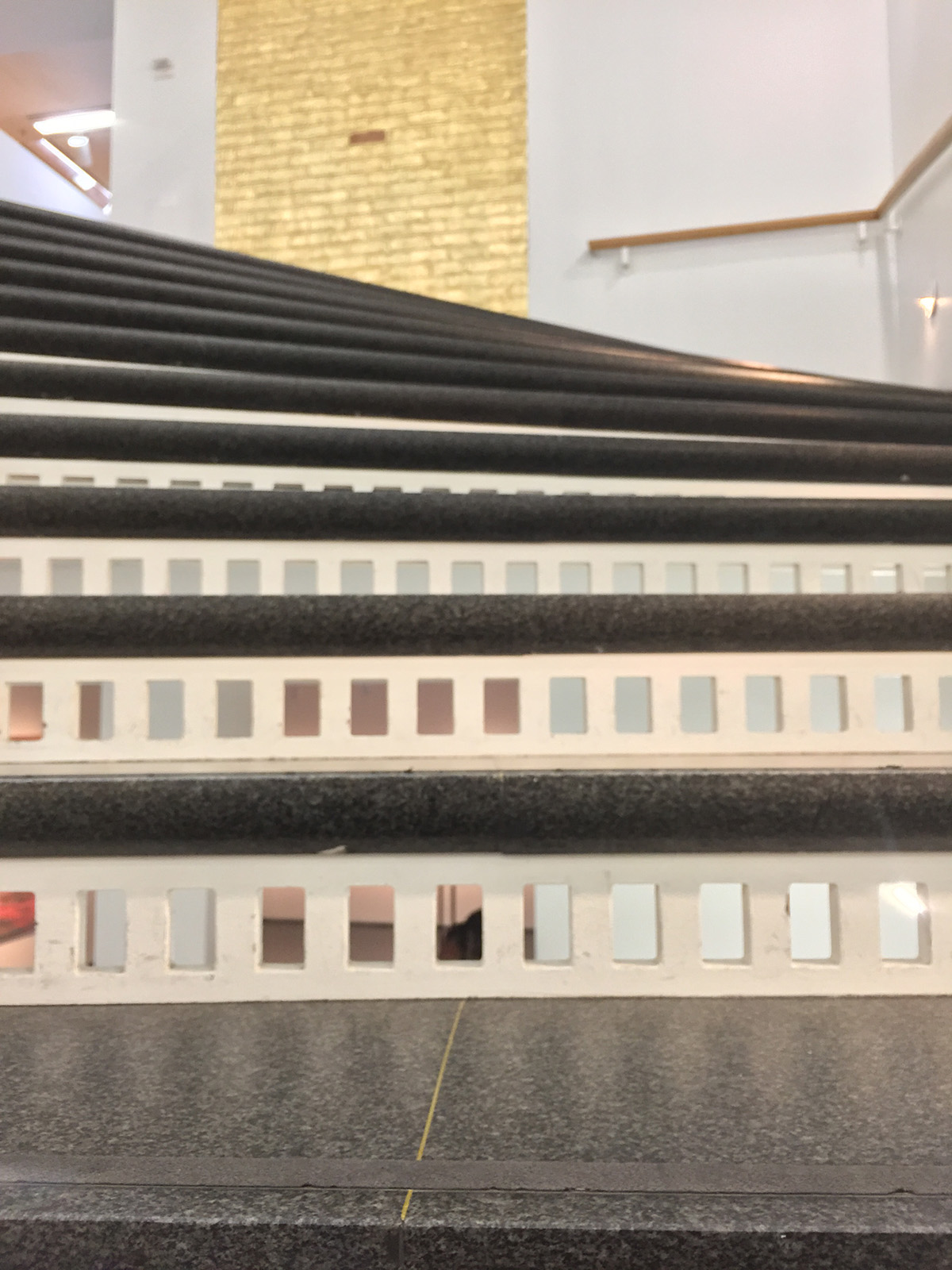
Materials
- Map of Chicagoland
- Push pins and flags
- Active minds
MCA Connections
Students had the luxury of visiting the MCA twice for the project. The class was able to visit both the Takashi Murakami (The Octopus Eats its Own Leg) and Amanda Williams (Chicago Works / Color(ed) Theory) exhibits twice, both of which helped motivate students’ inquiry throughout the project. The first visit was an independent summer visit with the simple goal of experiencing the art. This first visit allowed for a collective, if individual, experience of culture which laid a foundation for noticing. The students were able to remember the experience and reflect on what they noticed and others didn’t.
The second visit to the MCA, this time via a class field trip, allowed students to revisit art they had connected with over the summer, apply their newfound content knowledge to contemporary art, and practice their new noticing skills.
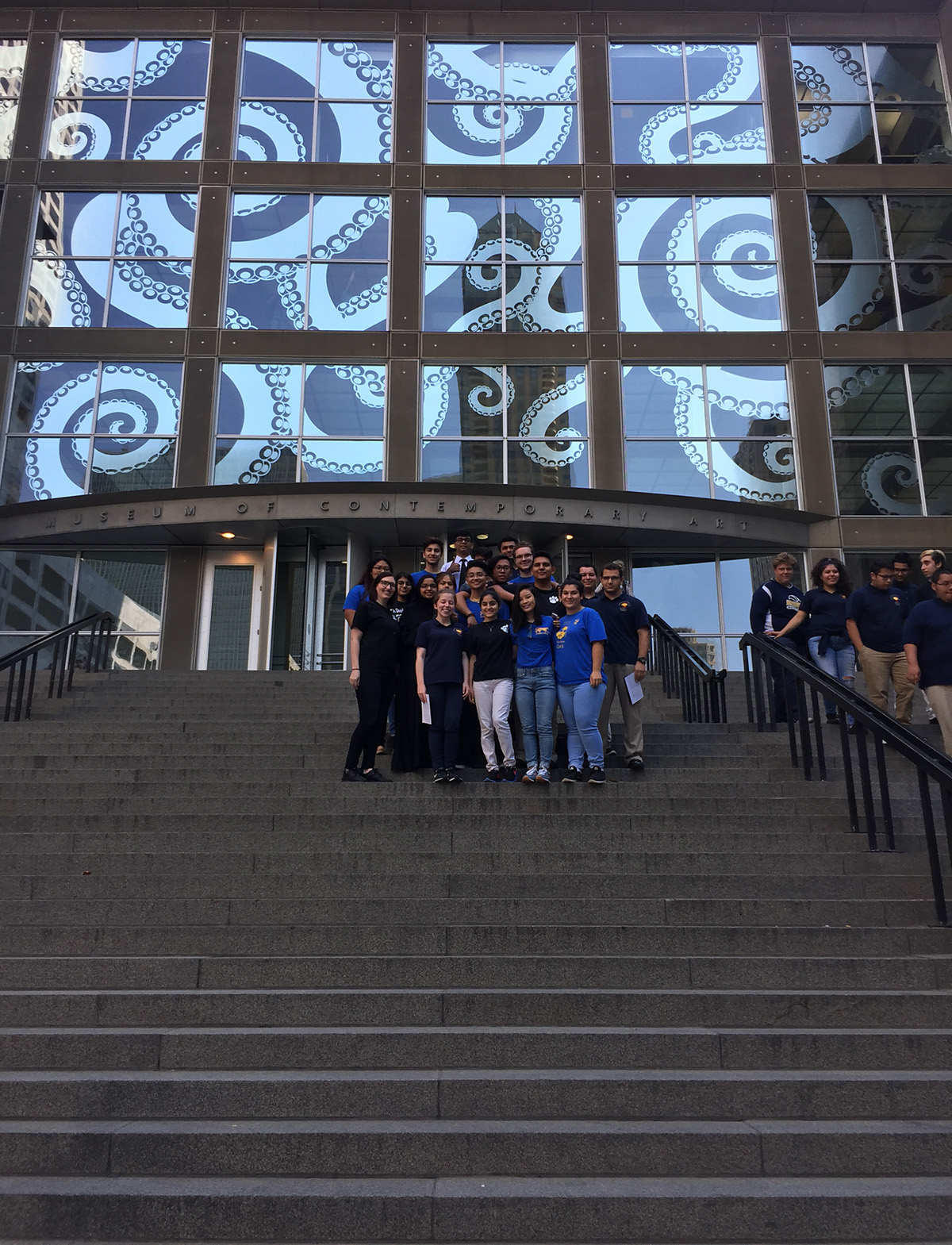
References + Resources
- Full list of the 250 artworks (and resources of AP Art History popup: yes)
Top Chicago Locations/Artworks Visited
- Specific Public Works: Cloud Gate, The Agora
- Neighborhoods: Pilsen, Hyde Park, Chinatown
- Schools: University of Chicago, IIT, Dominican, DePaul, Loyola
- Museums: MCA, Art Institute, Oriental Institute, The Field - Museum
- Houses of Worship: Saint Josephat Catholic Church, Mother of Compassion, Rahmat-e-Alam Masjid, Queen of All Saints Cathedral
- Other: Chicago Theater, Harold Washington Library
Claire Jackson
CICS Northtown Academy
About Claire Jackson
Claire Jackson is an English and Humanities teacher on the northwest side of Chicago. She earned her bachelor's degree in English Literature from Saint Mary's College, an all-women’s college. Throughout her teaching career of six years, Claire has prioritized liberal arts teaching philosophies, infusing a diverse range of "texts" in her classroom. This means the visual arts play an integral role in her pedagogy. Claire brought AP Art History to her school and has taught it for the last two years.
Claire Reflects on the Project
At first, students thought of connections purely in academic terms. Much of the knowledge in AP Art History can seem esoteric and erudite. For many of my students, even visiting a museum is intimidating. As the project proceeded, however, their excitement grew with their new-found ‘power.’ Through this project, they have revealed their own ability to decipher the world (and art) around them. What was nebulous is now tangible.
It was thrilling when students realized they weren’t exploring Chicago enough and decided they wanted to experience their city in new, more conscious ways. One of the obstacles we encountered along the way was the reluctance of many parents to let their students explore the city on their own. This could be remedied by hosting more planned weekend Chicago meetups throughout the city.
